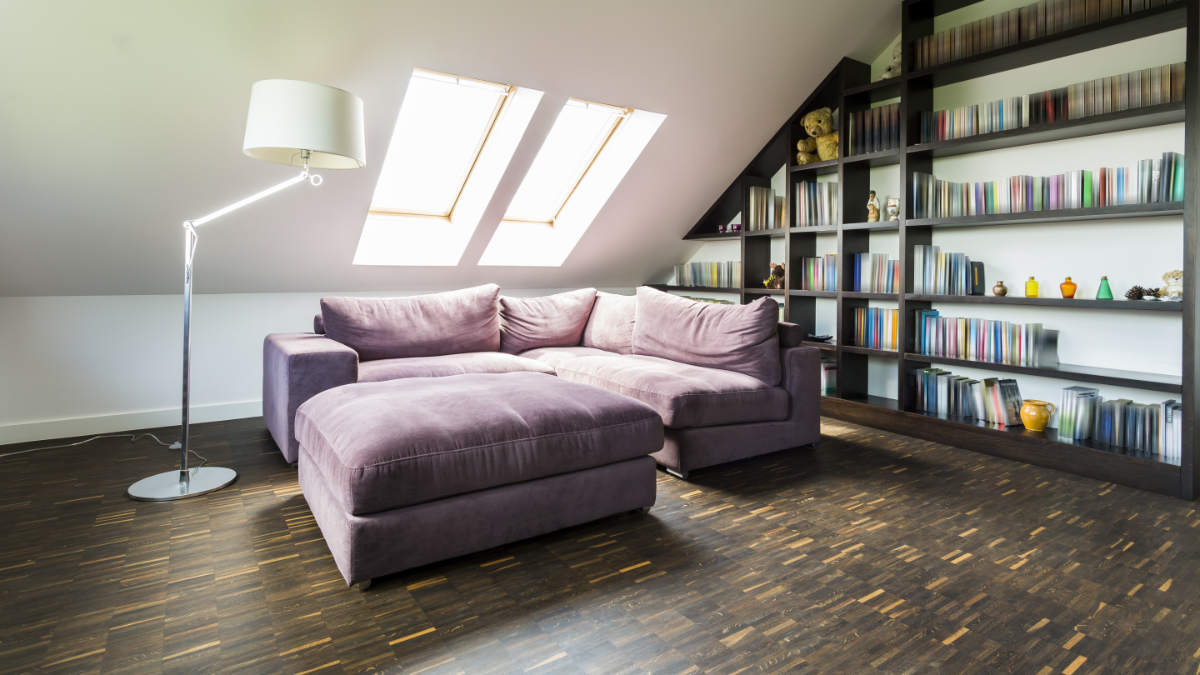Thinking about getting a loft conversion? There’s no doubt that a loft conversion can be a fantastic space maximising addition to your home – but where do you start with such a project? Our guide will help you to feel confident in making the right decision and provide you with some useful loft conversion ideas and tips.
Benefits of a loft conversion
Most of us could really do with more space at home but moving house to gain it can simply be too daunting, impractical or expensive. A loft conversion is a great way to maximise your space without the hassle and disruption of a house extension – and you’ll be amazed at how spacious a converted loft can be. People choose loft conversions for a variety of reasons, including:
Extra space A loft conversion can deliver a whopping amount of space which you can use to carry out hobbies and enjoy leisure activities – whether your dream has always been to have your own art or photography studio or to create a yoga or reading room.
Office space Loft conversions make great flexible offices where you can work or administer a business.
Additional bedrooms Converting your loft into a guest bedroom lets you easily accommodate visiting friends and family. Some people create master bedrooms in their loft with an ensuite bathroom, while others look to create a child-friendly den for visiting grandchildren.
Add value A loft conversion is a highly desirable addition to your home, adding sustainable value to it and make your financial investment all the more worthwhile.
Loft conversion ideas and types to consider
Generally speaking, there are three primary types of conversions (in addition to the simple Velux type of conversion, which basically involves adding windows to your attic).
Dormer conversions This involves building a new vertical roof that extends from the bottom of the existing sloping roof. Then, headroom is added by building a new flat roof section to meet the vertical wall. This is the most common type of loft extension.
Hip-to-gable conversions These are used where there isn’t a great deal of existing attic space. The hipped – or sloping – side of the roof is replaced with a flat gable section. These are suitable for a range of house types, from bungalows and chalets through to semi and detached houses.
Mansard conversions This type of conversion is usually built at the back of a property and features a sloping wall and flat roof. They are often found in terraced homes and urban areas and can add a sizeable amount of extra room to the upper floor of the property. Because of this, they tend to be larger and more disruptive projects, which in turn makes them more expensive.
The type of loft conversion you choose will depend on your home, your budget and any planning permissions. The first step is to obtain technical planned drawings created by an architectural technician or architect. The viability of the project and any structural changes required may need to be assessed by a structural engineer.
Planning and building regulations
For dormer conversions, planning permission isn’t usually needed. However, planning permission may be required for a hip-to-gable conversion and will usually be needed with a mansard loft conversion. Your loft conversion company will be able to give specific advice when they carry out a site assessment at your home.
Regardless of whether planning permission is required, you will need to get building regulations approval. A building control surveyor will do this by inspecting the project and then issuing a completion certificate once it is finished. There may also be a requirement to notify your neighbours if you live in a terraced or semi-detached house if your project falls within the Party Wall Act regulations. Your loft conversion provider will give you full information about this.
How to choose a loft conversion company
A loft conversion must be carried out by a reputable, accredited and trusted provider in order to guarantee a quality, safety compliant result that meets your needs and any planning regulations. People use different methods to find a provider, and it makes sense to combine a range of approaches to weigh up your options. These could be:
Recommendations – Most people will ask for recommendations from friends, family and neighbours. If you’ve admired a loft conversion at someone else’s home, you may be sufficiently persuaded to contact their provider to get a quote. Ask around and find out what others have experienced with their own loft conversions. Were they impressed with the outcome, the service, the cost and so forth?
Review websites – These are a great way of finding out what other customers thought about a loft conversion company that they used. Look for unbiased websites and spend time looking at ratings and comments for any local providers you’re interested in. Because of the size of the project, it makes sense to use a company with a large number of consistently positive reviews.
Experience – Every loft conversion is different, so look for a provider with plenty of experience in the type you’re looking for. A company with plenty of loft conversion ideas that inspire you may also be a promising choice.
Accreditations – There are various accreditation schemes which loft conversion companies may choose to be members of, but remember that these aren’t mandatory, and there will be good providers who simply haven’t pursued this route. Accreditations and quality membership marks to look for include:
- The Federation of Master Builders (FMB) – with the Build Assure membership being the highest
- Guild of Builders and Contractors – Trusted Member status
- British Woodworking Federation (BWF)
- Guild of Master Craftsmen
- National Federation of Builders
- FairTrades Association
A good approach might be to start with recommendations from contacts and local research, and create a shortlist using reviews and accreditations. Then contact the three most promising providers to get a sense of their experience and ‘fit’ and to assess their availability and costs. Take your time to find the right provider as your loft conversion will be a big project and you will want to be delighted with the finished result!
Loft conversion costs
It’s vital to establish a budget, as this will guide the type of loft conversion you choose (along with the structural possibilities and any planning permits) – and also guide your loft conversion ideas and ambitions. A loft conversion can cost anywhere from £21,000 to over £55,000, depending on the extent of work involved. You may also be advised to take out specialist insurance during the work period.































































